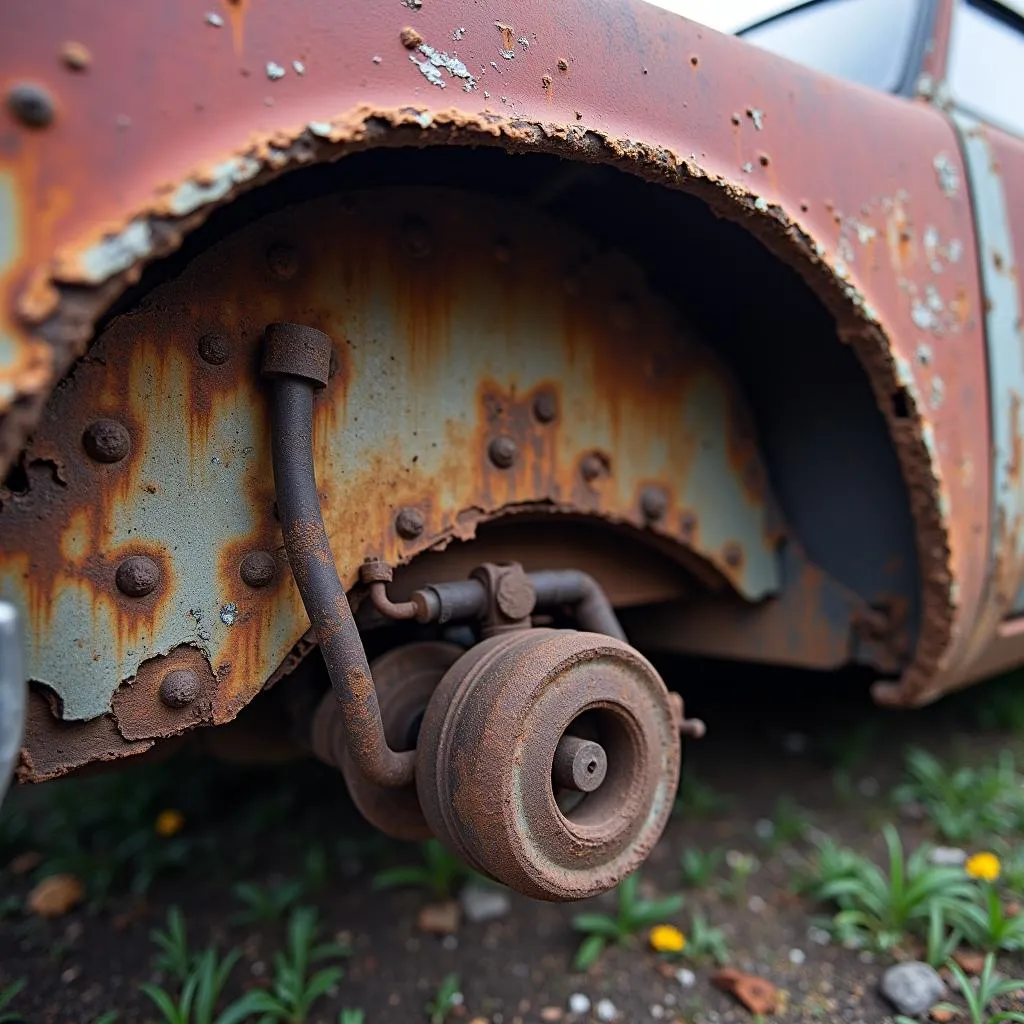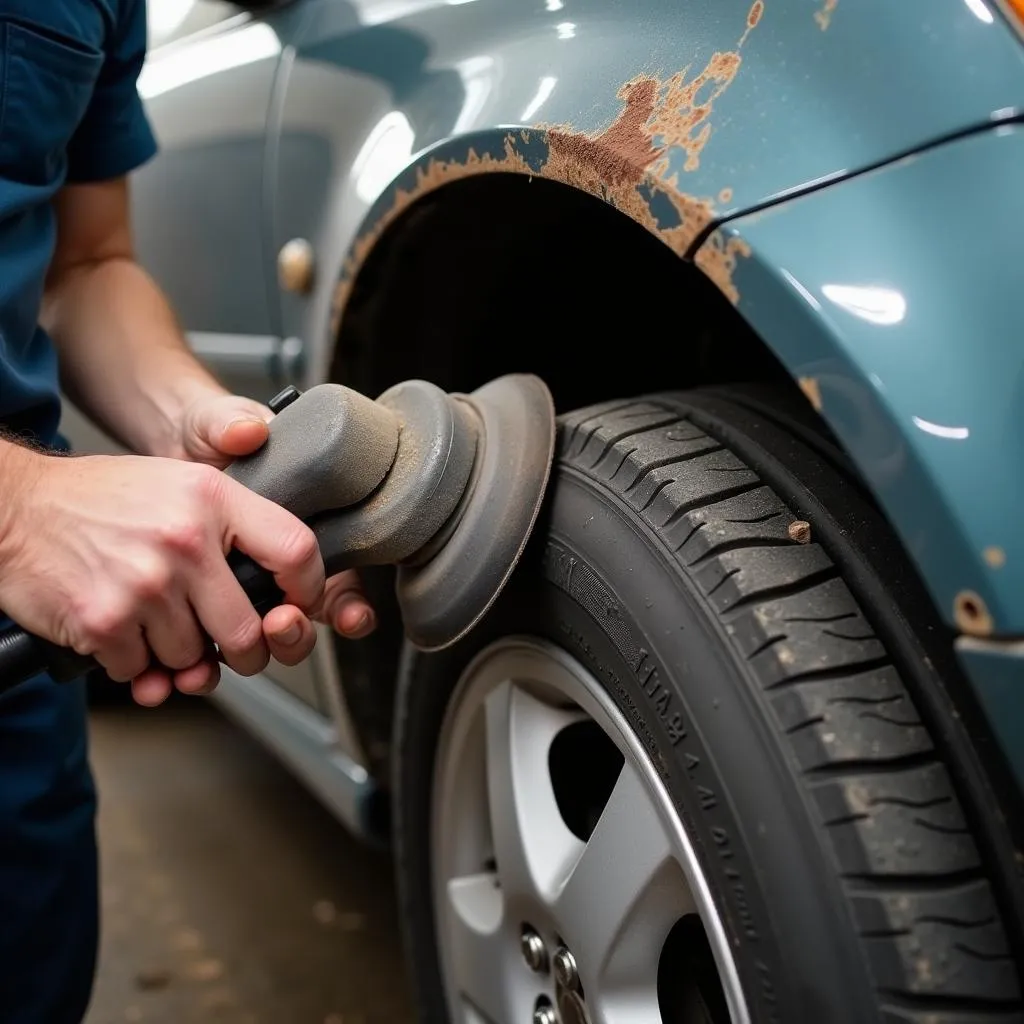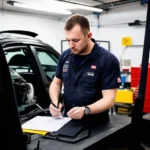Most car owners are familiar with this scenario: you spot a small, seemingly harmless blemish on your car, only to discover upon closer inspection – it’s rust! But how serious is car rust, and what’s the best way to deal with it? This article covers everything you need to know about rust spots on your car.
Even a small rust spot can quickly escalate into a major issue. Rust isn’t just a cosmetic problem; it weakens the vehicle’s structure and, in severe cases, can compromise driving safety. What’s particularly insidious is that rust often hides in hard-to-reach areas, like the undercarriage.
 Severe rust damage on a car's underbody, illustrating the extent of corrosion.
Severe rust damage on a car's underbody, illustrating the extent of corrosion.
Where Rust Comes From and How to Spot It
Where does rust come from, and how do you identify it? Rust forms through a chemical reaction between iron, oxygen, and water. This combination causes iron to oxidize, a process we know as corrosion. Areas frequently exposed to moisture, such as wheel wells, rocker panels, and the undercarriage, are especially prone to rust spots.
Typical signs of car rust include:
- Small, reddish-brown spots on the paint
- Paint bubbling or blistering
- Peeling or flaking paint
- Visible holes in the metal
Car Rust: Danger Spotted, Danger Avoided?
If you find rust on your car, act fast. The sooner you treat rust, the better your chances of preventing further damage.
What are the Options for Treating Rust Spots?
Rust spot treatment depends on the extent of the corrosion. For surface rust, it might be enough to remove the rust, treat the area with a rust converter, and then repaint it. Calculate labor value can help you estimate the repair costs.
 Car fender undergoing rust repair, with a mechanic grinding away rust to prepare for refinishing.
Car fender undergoing rust repair, with a mechanic grinding away rust to prepare for refinishing.
If rust has penetrated deeper into the metal, the affected section needs to be cut out extensively and replaced with new sheet metal. This type of repair should always be done by a professional, as it requires specialized skills and tools. The cost of such repairs can vary significantly depending on the extent of the damage.
“Rust is like a small crack in a dam – if you don’t fix it early, you’re looking at a major disaster,” according to Dr. Ing. Hans Schmidt, automotive expert from Munich.
Rust Prevention – How to Protect Your Car
As the saying goes, prevention is better than cure. With a few simple steps, you can significantly reduce the risk of rust spots on your vehicle:
- Regular Car Washes: Regularly remove dirt and road salt from your car.
- Waxing: A coat of wax protects the paint from moisture and grime.
- Undercoating: An undercoating provides extra protection against road debris and moisture.
- Dry Storage: If possible, store your vehicle in a dry and well-ventilated area.
Car Rust Spots – No Need to Panic, But Act!
Rust spots on your car are annoying, but not a cause for despair. The key is to act early and take the correct steps. With proper care and maintenance, you can significantly extend the life of your vehicle and enjoy your car for years to come.
More Questions About Rust Spots?
- How can I effectively remove rust from the undercarriage?
- What home remedies are effective against car rust?
- Is repair still worthwhile for severe rust damage?
Visit Autorepairaid.com for more helpful information on car repairs. Also, check out our articles on related topics like Wheel arch welding costs or VW T4 floor panel.
Need help repairing your vehicle? Our auto repair experts are always ready to assist you with advice and service. Contact us through our website – we’re happy to help!

